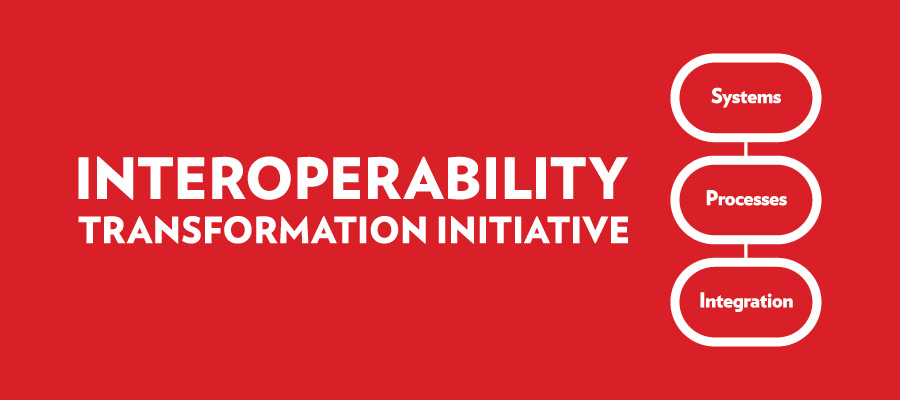With hundreds of applications across the UW–Madison campus needing to interact with each other as efficiently as possible, the Interoperability Initiative aims to map out a more thoughtful approach to how we “plug things in” to the UW ecosystem.
At the May 27 IT Projects Update Forum, the initiative’s lead architect presented a deep dive into the transformation project, informally known as “Interop.”
In the hour-long forum, updates were also provided for four other key projects:
- Research Drive
- Endpoint Management and Security
- Box Discovery
- June 3 update: New storage quotas for Box after unexpected contract changes
- WiscList Migration
For more updates on the initiatives above, stay tuned to upcoming issues of TechNews—and watch the recording of the update forum. (password: fGWfbwi8)
What is Interop?
The Interoperability Initiative seeks to look across system silos to understand and improve customer experiences and outcomes, explained Tom Jordan, Interop’s lead architect. Ultimately, Interop is a vision for enabling access to the right services at the right times—and for the right reasons.
One example: How UW–Madison login and security systems are integrated, and how those services are then presented in a logical manner to the people who need them.
“There are a variety of new and interesting technologies that offer a lot of promise to the university,” Jordan said. “But to make the best use of these things, we really need to be able to tell a cohesive integration story.”
In the university’s current integration landscape, Jordan explained, the lack of an overall integration strategy for applications and data has led over time to a patchwork of system integrations, solving specific problems for specific applications.
“This lack of institutional strategy creates some problems,” said Jordan, a solutions architect in the Division of Information Technology’s Application Infrastructure Services group. “It creates a mesh of dependencies between applications that’s fragile and difficult to maintain over time.”
For instance, when one system makes a change or gets an upgrade, the change ripples across other systems downstream that are sometimes far removed from the source of the change.
“This means that changes require exhaustive testing,” Jordan explained.
During the last Student Information System upgrade, for example, more than 100 different integrations needed review, and many required manual testing and verification.
“Because of this fragility and risk, change is difficult and slow. System owners often cannot move as quickly as they would like to implement new functionality or pursue new opportunities,” Jordan said. “Successes that we see at peer institutions may be difficult to replicate locally, due to inflexibilities in our infrastructure.”
How will Interop benefit users?
The current IT landscape represents a “system-centric view,” Jordan explained, which means end users must navigate from one system to another to perform different aspects of a common task.
“I may have to interact with an HR system to hire someone, a financial system to allocate money to pay them, and other systems to get them a computer to work at and a place to sit,” Jordan said. “But to our users, this is all part of the same task: getting a new person onboarded and productive.”
So, what will end users see when the initiative is complete, and how will it make their lives better?
Jordan said a major component is a concept the interop team is calling “Profile”—the ability for a user to easily register, then maintain personalization, preference and privacy information about themselves. That information would then be available to multiple university applications.
“While a single account to access all things across the university is a wonderful aspirational goal, it’s going to take us some time to get there,” Jordan said of the multi-year initiative, targeted for completion in June 2022.
“As in all things, meaningful change is always hard work, and we’ve certainly got our share of it on this project,” Jordan added. “But we’ve come a long way, and we’re looking forward to moving into implementation and the infrastructure and capability it will provide for applications.”
Learn more
To learn more about the Interoperability Initiative:
- Visit the website: https://interop.it.wisc.edu/
- View the IT Projects Update Forum slides
- Watch the forum recording (password: fGWfbwi8)
